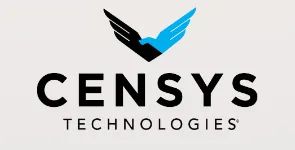
Metamorphosis in Motion: Unleashing Organizational Transformation with Finesse
"Organizational transformation is not a destination; it is an ongoing journey of growth, adaptation, and innovation." - John Doe
Introduction:
In today's rapidly evolving business landscape, organizations must adapt and transform to stay competitive. Embracing change and unleashing the power of organizational transformation has become essential for long-term success. Like a caterpillar turning into a butterfly, businesses must undergo a metamorphosis to reach new heights. In this blog post, we explore the art of organizational transformation and delve into the strategies that can help organizations navigate this journey with finesse.
Understanding the Need for Organizational Transformation: Organizational transformation is not a luxury; it's a necessity for businesses to thrive in the face of emerging challenges. This section sheds light on the key factors that drive the need for transformation, such as disruptive technologies, changing customer demands, and market dynamics. By recognizing the need for change, organizations can lay the groundwork for a successful metamorphosis.
Embracing a Mindset of Change: Organizational transformation starts with a mindset shift. This section discusses the importance of embracing change at all levels of the organization. It explores how leaders can foster a culture that values innovation, continuous learning, and adaptability. By creating an environment where change is embraced, organizations can unleash the transformative potential of their workforce.
Designing a Comprehensive Transformation Strategy: Successful transformation requires a well-crafted strategy. This section delves into the components of a comprehensive transformation strategy, including setting clear objectives, establishing a roadmap, and aligning stakeholders. It explores the importance of leveraging data and insights to drive decision-making and outlines the role of technology in supporting transformation initiatives.
Navigating the Challenges: Organizational transformation is not without its challenges. In this section, we discuss common obstacles that organizations may encounter during the transformation journey. From resistance to change and cultural barriers to resource constraints, we explore strategies and best practices to overcome these challenges and keep the transformation on track.
Empowering Transformational Leadership: Leadership plays a pivotal role in driving successful organizational transformation. This section explores the qualities and skills that transformational leaders possess. It discusses how leaders can inspire and motivate their teams, foster innovation, and create a shared vision for the future. By empowering transformational leadership, organizations can navigate the complexities of change with finesse.
Sustaining and Evolving the Transformation: Organizational transformation is an ongoing process. This section emphasizes the importance of continuous improvement and evolution to sustain the transformational gains. It explores strategies to monitor progress, gather feedback, and make necessary adjustments along the way. By embracing a mindset of continuous transformation, organizations can stay agile and resilient in a dynamic business landscape.
Conclusion: Organizational transformation is a journey that requires careful planning, adaptability, and visionary leadership. By embracing change, designing a comprehensive strategy, and empowering transformational leadership, organizations can unleash their transformative potential with finesse. Embracing the metamorphosis in motion, organizations can navigate the complexities of the business world and soar to new heights of success.
Remember, the path to organizational transformation may not always be easy, but with the right mindset and strategic approach, organizations can truly achieve metamorphosis in motion.
With that said, here are 8 ways to start organizational transformation today!
1. Assess Your Current State: Begin by conducting a thorough assessment of your organization's strengths, weaknesses, and areas for improvement. This analysis will serve as a baseline for your transformation efforts.
2. Set Clear Objectives: Define specific and measurable objectives that align with your organization's vision and desired outcomes. These objectives will guide your transformation journey and provide a sense of direction.
3. Create a Sense of Urgency: Communicate the need for change effectively across all levels of the organization. Highlight the challenges and opportunities that drive the urgency for transformation, motivating employees to embrace the change.
4. Foster a Culture of Innovation: Cultivate an environment that encourages and rewards innovation. Empower employees to contribute their ideas and experiment with new approaches, fostering a culture of continuous learning and improvement.
5. Build Cross-Functional Collaboration: Break down silos and promote collaboration across departments and teams. Encourage open communication and knowledge sharing, enabling employees to work together towards shared goals.
6. Invest in Employee Development: Provide training and development opportunities to equip employees with the skills and knowledge required to support the transformation. Foster a learning mindset that encourages personal and professional growth.
7. Embrace Technology and Automation: Identify technology solutions that can streamline processes, increase efficiency, and drive innovation within your organization. Embracing digital transformation can significantly enhance your ability to adapt and stay competitive.
8. Communicate and Reinforce the Vision: Consistently communicate the transformation vision and progress to all stakeholders. Regularly engage with employees, listen to their feedback, and address their concerns. Reinforce the benefits of the transformation, keeping everyone aligned and motivated.
By implementing these strategies, you can lay the foundation for undergoing organizational transformation. Remember, transformation is a continuous journey that requires commitment, adaptability, and active engagement from all levels of the organization.
What type of content would you like to see?
Clients we've worked with:








